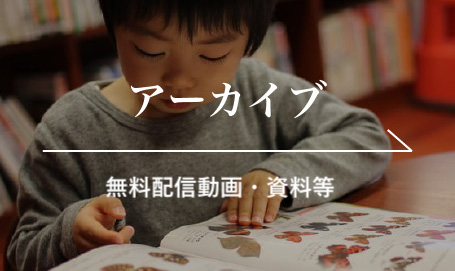Author(s): Kaneko Yoshihide.
Title: A Study of the Concentration Curriculum Adopted in the Latter Part of the Meiji Era : Detecting from annual kindergarten-program notes written by a student-teacher, Toku Matsushita.
Research on Early Childhood Care and Education in Japan, 2013, 51(1), 6-16.
Abstract: Hiroshima-Jogakkou Kindergartens already earned a reputation as a “New Style Kindergarten” in 1908. Though previous research examined the curriculum after 1912, ECE methods before 1912 are not completely examined. In this thesis, recently founded notebooks written by a kindergarten student-teacher Toku Matsushima in 1906 and 1907 school years are introduced. After investigating the contents thoroughly, the following three points are founded. Firstly, the concentration curriculum were modified from Japanese and regional point of view in 1907. Secondly, by choosing among drawing, pasting, and painting, she reconciled the aims of making pictures with children’s skills. Thirdly, she used “the gifts” not from Froebelian’s point of view but as economically convenient teaching materials.
Keywords: history of Kindergarten, Meiji-era, concentration method, Christian kindergarten
—————–
Author(s): Kitagawa Kumiko.
Title: Relations between kindergarten education in Meiji Era and children’s story : Under the influence of Herbart’s Pedagogy.
Research on Early Childhood Care and Education in Japan, 2013, 51(1), 17-25.
Abstract: The education contents of elementary school and that of kindergarten in Meiji Era seemed different because the elementary school education affected by various thoughts on the one hand, the kindergarten education was influenced constantly by the idea of Frobel on the other. However, viewing from the viewpoint of Herbert’s Pedagogy which was popular thought in Meiji Era, both the elementary school and kindergarten had the same educational objective called “cultivate one’s character” and employed “children’s stories” as educational materials; therefore both educational levels would have fundamental consanguinity. This study revealed that educational relations between the elementary school and the kindergarten from the point of education laws and regulations. It also examined the educational orientation of kindergartens in connection with the elementary school education through the awareness of “children’s story”.
Keywords: Meij Era, Kindergarten education, elementary school education, Herbart’s Pedagogy, children’s story
—————–
Author(s): Sano Tomoe.
Title: The Training, Licensing and Employment Conditions of Nursery Teachers in Pre-War Japan : Focusing on a Comparison with Kindergarten Teachers.
Research on Early Childhood Care and Education in Japan, 2013, 51(1), 26-35.
Abstract: This study will set forth the conditions surrounding the training, licensing and employment of nursery teachers in pre-war Japan. Nurseries in pre-war Japan were run without any official stipulations, and, accordingly, there were no stipulations regarding the licensing of teachers. This being the case, licensed kindergarten teachers often worked in nurseries, and, in some cases, schools that trained kindergarten teachers passed on the knowledge and skills nursery teachers needed. There were also short courses held for nursery teachers. While comparing the training received and employment conditions of the nursery teachers with that of the kindergarten teachers, the actual conditions experienced by the nursery teachers, under differing conditions for the very reason that there were no official stipulations, will be set forth.
Keywords: The Training Licensing and Employment Conditions of Nursery Teachers, Nursery teacher, Kindergarten teacher
—————–
Author(s): Yodogawa Yumi.
Title: The Change of Dialogue among 2-3-Year-Old Children during Nursery School Lunch Time : Focusing on responsiveness of children’s utterances and development of subjects of predication episodes.
Research on Early Childhood Care and Education in Japan, 2013, 51(1), 36-49.
Abstract: This study aimed to elucidate how 2-3-year-old children predicate and respond to each other during lunch at a nursery school. A 2-year-old class of 10 children was observed for 6 months and 32 episodes were analyzed quantitatively and qualitatively. Results were: 1) Focusing on the use of responsive utterances, response telling identity and difference among other children decreased, response adding information increased, and the ratio of questions didn’t change; 2) The use of sentence-ending particle(SEP) yo and no decreased, and the use of SEP ne, interjectory particle ne, sa increased. This suggests that children began to seek for sympathy and to continue dialogue from mid to later part of this time period; 3) Concrete episode analysis finds children gradually deepened and developed subjects which made dialogue more informative, and also began to propose compromise or to adjust their unpleasant feeling when they conflicted.
Keywords: peer dialogue among 2-3-year-old children, responsiveness, sentence-ending particle and inter-jectory particle, development of subjects, qualitative analysis
—————–
Author(s): Miyata Mariko.
Title: Three-Year-Old Children’s Block Play : Focusing on Changes in the Block Structure and Children’s Act.
Research on Early Childhood Care and Education in Japan, 2013, 51(1), 50-60.
Abstract: Changing process of behaviors in three-year-old children playing with large building blocks, particularly the experience of block play and the collaboration processes were investigated by observing childcare at a kindergarten. Froebel Gifts first used building blocks and today most of kindergartens are furnished with them. However, few studies have been conducted on the characteristics of block play. In this study, three-year-old children were observed for a year (In total 68 days net) and their characteristic behaviors were focused and analyzed. Results identified the following three periods in a year: (1) generation of purposes and the variety of purposes, (2) diversity in images and sharing of images, and (3) collaboration.
Keywords: block, play, 3-year-old children, sharing of an image, collaboration
—————–
Author(s): Tonegawa Akihiro.
Title: Developmental Process of Self-regulation Ability in a 4-year-old Kindergarten Class : Analysis of an Annual Records of Episodes by the Classroom Teacher.
Research on Early Childhood Care and Education in Japan, 2013, 51(1), 61-72.
Abstract: This study tried to examine the developmental process of self-regulation ability of young children through analyzing records of a 4-year-old kindergarten class with a target child for a year. The analysis revealed the detailed process of developing self-regulation ability with that child’s progress of understanding others. Also it illustrated that conflicting but supportive others to that child were involved in that process. It was suggested that this developmental process may be affected by the process of forming a group in a 4-year-old class, which is featured as ‘history of interaction’, ‘creating and sharing standards of the class’, and ‘understandings of membership of the group.’
Keywords: 4-year-old children, self-regulation ability, process of forming a group, conflicting but supportive others, troubles/conflicts
—————–
Author(s): Gonda Azusa, Imagawa Shinji.
Title: How Do Mothers Express Affection toward Their Children While Leaving Them at Kindergarten in the Morning?.
Research on Early Childhood Care and Education in Japan, 2013, 51(1), 73-82.
Abstract: This study elucidates how mothers behave and how they express affection toward their three-year-old children while leaving the children at kindergarten in the morning. The following results were obtained: (1) Mothers take great care of their children when they reach the classroom. (2) Mothers care more for their children while they are entering the classroom. Furthermore, they express affection toward their children by caressing their heads before leaving. (3) Mothers of girls are much more affectionate than those of boys. (4) First-time mothers express affection frequently. Additionally, the younger the children are, the more affectionate mothers are toward them.
Keywords: taking children to kindergarten in the morning, three-year-old children, mothers’ care for children, maternal expression of affection, behavioral analysis
—————–
Author(s): Kamiya Tetsuji.
Title: Analysis on the Emotional Labour and Relationships between Nursery School Teachers and Parents : Based on their Employment Status.
Research on Early Childhood Care and Education in Japan, 2013, 51(1), 83-93.
Abstract: Recently, the difficulties involving nursery school teachers in the way they treat parents have increased. The purpose of this study is to clarify how such involvements with parents influence the emotional labour of the teachers. Using data from 422 nursery school teachers, a multi-group analysis revealed that there were two cognitive processes based on the teachers’ employment status. First, part-time teachers directly masked their negative emotions when confronting parents in challenging situations. Second, full-time teachers indirectly masked their negative emotions through the medium of their introspection about such communication. These results suggest that full-time teachers tended to mask their negative emotions introspectively when confronting parents in difficult circumstances. Finally, this study explores the necessity to study emotional labour, especially in regard to management in the workplace and relationships among teachers.
Keywords: emotional labour, nursery school teachers, parents, family support, employment status
—————–
Author(s): Jitsukawa Noriko, Sunagami Fumiko.
Title: Characteristics of “mama-toms” in mother’s narratives : Focusing on differences between friendship with the other of mothers.
Research on Early Childhood Care and Education in Japan, 2013, 51(1), 94-104.
Abstract: The purpose of this study is to investigate how mothers who do not work outside the home distinguish the variety in relationships between mama-tomos. This study analyzes nine mothers’ narratives with Modified-Grounded Theory Approach. The results suggest that mothers distinguish (1) mother’s “self as I” or “self as parenting”, (2) friendship of the other mothers, (3) feeling of same quality.
Keywords: mama-tomo[mother-friends], mother’s self, friendship, feeling of same quality
—————–
Author(s): Tanigawa Natsumi.
Title: Professional Development of Novice Teachers through Their Crisis in Nursery Schools and Kindergartens : Focusing on Their Reflective Learning Process.
Research on Early Childhood Care and Education in Japan, 2013, 51(1), 105-116.
Abstract: This study examines professional development of novice teachers through the crisis of reality shock in the early stages of their career at nursery schools and kindergartens. It analyzes their reflective process of learning through qualitative research by interviewing two novice kindergarten teachers. The result of the analysis shows two dimensions of reflective processes through their reality shock experiences. The findings suggest it requires a certain period and a variety of chances for novice teachers to construct their interpretation framework to grasp problematic situations and to change their attitudes towards practice.
Keywords: novice teachers in nursery schools and kindergartens, crisis, reality shock, professional development, reflection
—————–
Author(s): Kousokabe Taku.
Title: The Narrative study of Self-Forming Process at the Turning Points for NurserySchool and Kindergarten Teachers : The formation and sharing of their future time perspective.
Research on Early Childhood Care and Education in Japan, 2013, 51(1), 117-130.
Abstract: In this study, we examine the expertise required for nursery school and kindergarten teachers in modern society by clarifying the factors of self-formation at their turning points through their recollections of their own experiences of turning points. Specifically, the first step is to fill in the lifeline chart with a vertical axis that gives “a sense of efficacy of nursery school and kindergarten teachers,” which is deeply related to their growth; to conduct a semi-structured interview to obtain insight into the timing, factors, and processes of their turning points, using the chart as an incentive; and to analyze the obtained language data using SCAT (Steps for Coding Theorization). As a result, the relationship between three categories and the transfer was defined as the driving factor of the turning points, which indicated that nursery school and kindergarten teachers recognized their turning points as a process consisting of the following six phases: i) problem recognition, ii) observation and reflection, iii) future time perspective, iv) the incidence of adverse situations, v) the activation of interaction with others, and vi) the sharing of actual feelings and future time perspective. They formed not only an individual community, but also a community of practice, together with other nursery school and kindergarten teachers, which indicated the importance of community’s sharing future time perspective.
Keywords: turning point, Steps for Coding Theorization, Future time perspective, community of practice
—————–









